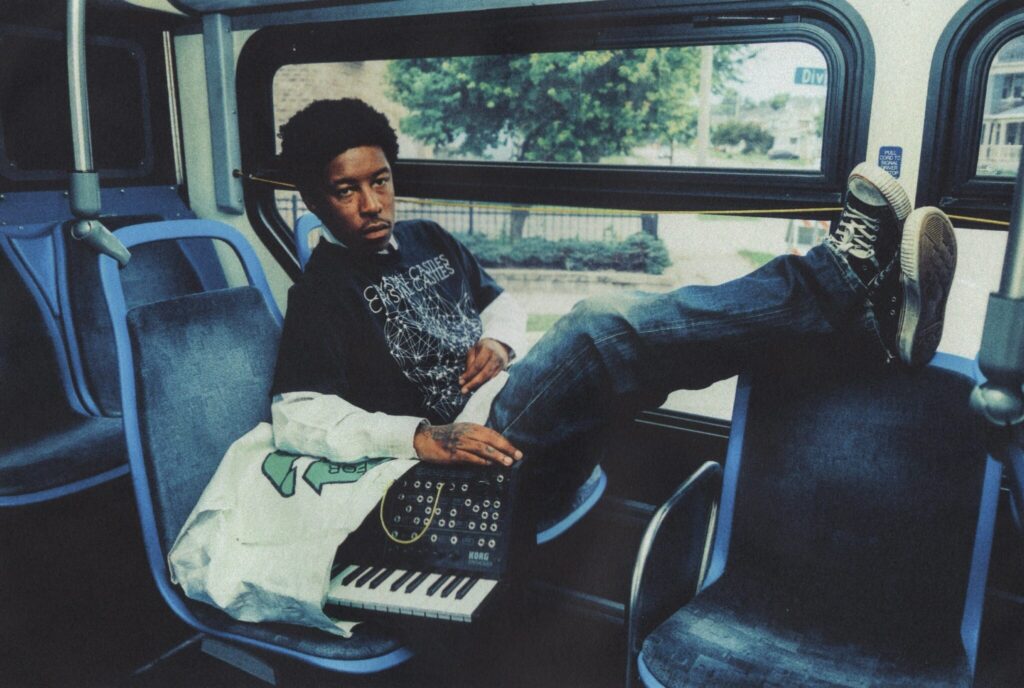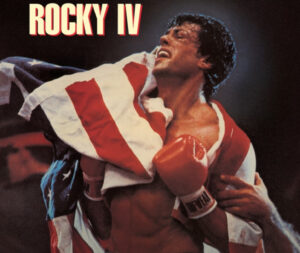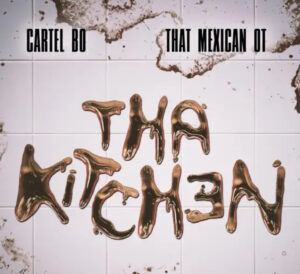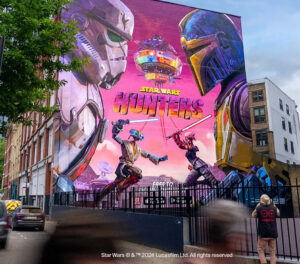A New Kind of Indie Hero
In a music world often dictated by algorithm-driven playlists and genre pigeonholes, KennyHoopla has emerged as a figure who refuses to fit the mold. Born Kenneth La’ron in Cleveland, Ohio, KennyHoopla did not arrive on the scene with a carefully sculpted aesthetic or a PR-backed grand entrance. Instead, his rise feels scrappy and authentic, like the burned edges of a photocopied zine that makes its way from hand to hand. His blend of jagged post-punk guitars, restless indie energy, and confessional lyricism has made him indie rock’s most unlikely posterboy.
While streaming culture thrives on glossy packaging, Kenny’s approach feels urgent and raw. His music exists at the intersection of nostalgia and now—drawing on the buzzsaw guitars of early 2000s indie icons like Bloc Party and The Strokes, but welding them to a personal narrative that speaks to contemporary anxieties. That tension—between memory and immediacy, between chaos and clarity—is what gives KennyHoopla his rare appeal.
From Cleveland Basements to Global Recognition
Cleveland is not often thought of as the epicenter of indie rock. Yet for KennyHoopla, the Midwest became a crucible for ambition. He grew up surrounded by the usual backdrop of suburban uncertainty, finding his voice in skate culture, mixtapes, and DIY shows. For him, music wasn’t just a pastime—it was a necessary act of survival, a way to make sense of dislocation and to fight isolation.
Kenny first gained traction with tracks like “Lost Cause” and “How Will I Rest in Peace if I’m Buried by a Highway?//”—songs that introduced listeners to his fractured storytelling and restless production. They carried the pulse of indie revivalism but were filtered through the perspective of someone who wasn’t raised in London lofts or Brooklyn clubs. His voice, both literally and metaphorically, carried the grit of someone who grew up outside the “expected” indie epicenters.
The Midwest upbringing proved vital. It grounded his work in a sense of yearning, of wanting to break out but still carrying home with him. His music became both a rejection of small-town constraints and an acknowledgment of the emotional ties that keep him tethered.
The Sound of Urgency
What makes KennyHoopla’s music so compelling is its urgency. His songs often begin at full tilt, guitars slicing through the mix with reckless abandon, drums attacking like they’re on the verge of collapse. There is little patience for slow build-ups; instead, the listener is thrown directly into the storm.
And yet, amid the chaos, there’s vulnerability. His lyrics often turn inward—grappling with loneliness, self-doubt, and the quest for meaning. It’s this duality that defines his artistry: aggression tempered by confession, speed counterbalanced by fragility. When he sings, there’s an unpolished ache that cuts through, reminding listeners that the music isn’t about perfection but about truth.
Flow and Community
Kenny’s rise has also been shaped by collaboration, most notably with Travis Barker, the drummer from Blink-182. Their joint work brought KennyHoopla into a wider spotlight, aligning him with the pop-punk resurgence of the early 2020s. But rather than be absorbed fully into that trend, Kenny has kept his individuality intact.
Where some artists might lean entirely into commercial pop-punk for guaranteed streams, Kenny continues to straddle scenes. He nods to nostalgia without being trapped by it, ensuring his music feels rooted in indie’s exploratory ethos rather than a calculated revival. The Barker collaboration showcased his versatility, but his core remains in the raw indie rock space he carved out for himself.
Thematic depth: Hope, Struggle, and Roots
For KennyHoopla, music is not just sound—it’s a lifeline. In interviews, he has often described writing songs as a way of finding hope when life feels heavy. That hope doesn’t come from ignoring pain, but from confronting it head-on. His work captures the feeling of running down dark streets late at night, headphones on, searching for clarity amid noise.
Returning to his roots has been another central theme. Despite touring across the world, he often reaffirms the importance of home—of Cleveland, of the Midwest, of the small venues where he first cut his teeth. In a culture that equates success with leaving one’s past behind, Kenny embraces the opposite. His identity as an artist is inseparable from where he comes from, and he seems intent on carrying that narrative forward.
The Unlikely Posterboy
To call KennyHoopla the “posterboy” of indie feels ironic, because he doesn’t look or sound like the stereotype. Indie’s historical imagery has often leaned on white, middle-class aesthetics—stylish ennui photographed in grainy black-and-white. Kenny’s story, by contrast, is one of a Black artist emerging from a nontraditional indie environment, carving out space in a scene that hasn’t always made room.
And perhaps that’s exactly why he resonates. By refusing to fit the mold, he redefines it. He embodies indie in its truest sense—not as a set of aesthetic codes, but as independence itself. His music thrives on risk, imperfection, and emotion—the very qualities that gave indie rock its earliest spark.
Shaping the Future
As he continues to evolve, KennyHoopla represents more than just one artist’s rise. He reflects a broader shift in music, where boundaries blur and authenticity matters more than genre tags. In a time when “indie” can sometimes feel like a marketing label, Kenny breathes life back into the word.
His trajectory is still unfolding, and that’s what makes it exciting. Will he continue to push deeper into punk? Will he circle back to the jagged indie rock of his earliest hits? Or will he take an entirely unexpected turn? The answer is unknowable, but the unpredictability is part of the allure.
Impression
KennyHoopla’s story is not about a polished narrative or a perfectly curated image. It’s about noise, chaos, and the beauty that can be carved from both. In his songs, there’s a reminder that music doesn’t need to be flawless to matter—it needs to be real.
In revitalising buzzsaw indie rock, KennyHoopla has become the genre’s unlikely posterboy. But the label itself seems almost unnecessary. What he offers is more than a revival—it’s a reclamation of music’s ability to give hope, to provide escape, and to remind us of where we come from. That’s not just indie. That’s timeless.
No comments yet.








